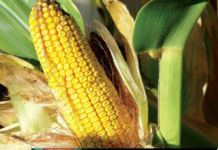Even though it’s sometimes frightful outside during the winter months, warm up by thinking ahead to maintaining those livestock watering setups when the cattle finally get turned out this spring.
But clean water isn’t something that happens during a certain season. Livestock of any species need a clean, fresh, reliable source of water year-round. During warmer months, staying ahead of algae growth and dirty conditions can prove to be challenging, especially during the peak busy season for many farmers and ranchers.
Iowa State University Extension material suggests algae growth can come from excess organic matter in tanks. Dirt, manure, feed, saliva or urine help encourage growth. One fact sheet suggested eliminating the opportunity for livestock to crawl into tanks, placing feed sources away from water tanks to keep stray hay stems or grain out of water, and discouraging animals from congregating near the water source in order to manage cleanliness.
Beth Reynolds and Erika Lundy-Woolfolk of ISU said the most effective way to maintain a healthy water source is to regularly clean it. The pair suggests draining the tank manually or turning off the water source and watching for livestock to drain the tank. Long-handled brushes with stiff bristles work best to scrub the sides and bottom. Rinse to reduce buildup and remove dead algae. Then, consider options to suppress algae growth.
There are chemical water treatment options available in retail locations that are safe for livestock. Copper sulfate or bleach can be effective when used appropriately. Many can kill or suppress algae bloom.
ISU said care should be taken to closely follow label directions when utilizing copper sulfate. Due to its corrosive properties, the longevity of metal tanks, pipelines, and floats may be shortened, and it can cause skin irritation. If using copper sulfate, allow at least five minutes following treatment before allowing cattle access to get effective results. Copper sulfate can be utilized every two to four weeks, if needed.
Another chemical option includes unscented household bleach. ISU said by adding 2 to 3 ounces per 50 gallons of water, algae growth can be hindered without impacting water palatability. Keep cattle away from the tank for an hour, allowing the chlorine to dissipate prior to water consumption. If deemed necessary, bleach can be utilized weekly.
Pastures, too
Water sources in pastures need to be cared for as well. Jerry D. Volesky, associate director of the Center for Grassland Studies and professor, range and forage specialist with the University of Nebraska-Lincoln said pastures with large water tanks can be troublesome too.
“Yes, that can be a challenge in keeping water in large livestock tanks clean,” Volesky said.
One design—a bottomless tank—is fairly common in the Nebraska Sandhills and were often filled by a windmill pump.
“These windmills ran all the time (when there was wind) when cattle were in the pasture and they had an overflow setup,” he said. “So water ran out of the tank as new was pumped in.”
A more natural method used to control algae growth in tanks is goldfish. Data from the University of Missouri recommends adding 4 to 6 goldfish per 100 gallons of water. To survive, water temperatures need to be above 60 degrees Fahrenheit. The tank will still need to be cleaned periodically in order to remove fish excretions. Volesky’s not as convinced.
“I am not sure how well the fish would work,” he said. “Might have to stock some every year.”
Other research from the University of Minnesota found no difference in algae presence when goldfish were utilized compared to tanks without.
Frozen water
When temps begin to drop, Kansas State University experts said producers need to be sure their watering setups allow full-time access to clean, fresh water. Most typically, cattle will drink about a gallon of water for every 100 pounds of body weight. Those lactating cows will drink even more.
Veterinarian Bob Larson said in a K-State release that water is the most important nutrient for overall cattle health and production. It is important for cattle to have access to clean water at all times, even in freezing temperatures.
Investment in a freeze-proof waterer can be expensive, but not having the labor of breaking ice may be well worth the investment in the long run. With this type of waterer, the animal’s consumption will keep the water free flowing at all times. Routine maintenance with this equipment needs to be performed periodically.
Experts from K-State agree, those animals who are consuming water from a well, the water should be tested periodically to make sure it’s safe.




